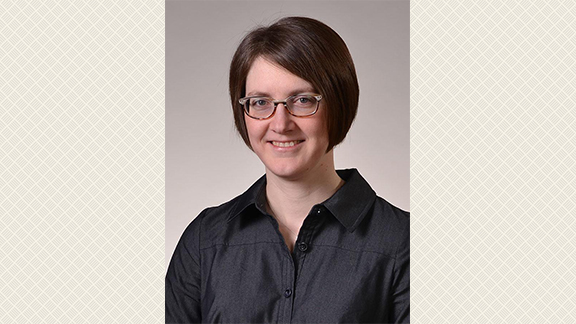
Lorraine Males’ research on mathematics instructional materials may help inform curriculum developers and educators about the effectiveness of those materials. Males, an assistant professor in Teaching, Learning and Teacher Education (TLTE), is using eye tracking technology to explore the interactions that occur between teachers and math instructional text and how differences in text influence these interactions.
With more than 80% of K-12 math teachers using a pre-designed curricular program, the daily interactions with these materials greatly influence teaching and learning. Past research has shown this to be true, but not much is known about the nuances of teachers engaging with text. Using two lessons from two different math curriculum publishers, Males will enlist her Nebraska students who are preparing to be secondary math teachers.
The eye tracking technology will record where students are looking on the page of text and how they interact with that text. Males intends to analyze any differences in how students interact with the two different lessons.
“Although we know quite a lot as a field about what mathematics teachers do with curriculum materials and we think we know a lot about written curriculum materials themselves, we still known little about how teachers participate with materials to plan and enact instruction and how structure and format of materials influences this use,” said Males. “Furthermore, we know even less about preservice teachers’ interactions with materials and how teacher educators might support the development of strategic curriculum use practices. This grant will allow our team to describe what teachers attend to when using different curriculum material when planning, how they interpret what they attend to, and what decisions they make to respond."
Males will also interview the participants to get their perspectives and reactions to the way they interacted with the text. What did they think they attended to in the text? How did the different elements and formats of the curriculum materials influence how they interacted and interpreted the material?
“By participating in the teacher interviews, transcription and coding, I have been able to witness several teachers planning lessons first hand,” said Brett Shaw, preservice teacher research assistant. “This has provided valuable insight into the many ways lessons can be planned and the many things teachers need to attend to. This has also brought to my attention new ideas and ways to plan, as well as reassured some of my current planning practices.”
Other students who have contributed to this work include include Matt Flores, mathematics education graduate student (TLTE); Ariel Setniker, mathematics graduate student (MATH); and three pre-service teachers from TLTE, Robin King, Lauren Martin and Coleman Tokar.
The research is being funded by CPM Educational Program Research Grants for Mathematics Education. CPM is one of the publishers of the curriculum materials being used in the study. Combined with a pilot project last year, CPM has awarded Males $50,453 for the research.
Males and preservice teachers Robin King, Lauren Martin, and Brett Shaw presented initial findings from the study Feb. 24 at the CPM National Conference in San Francisco.